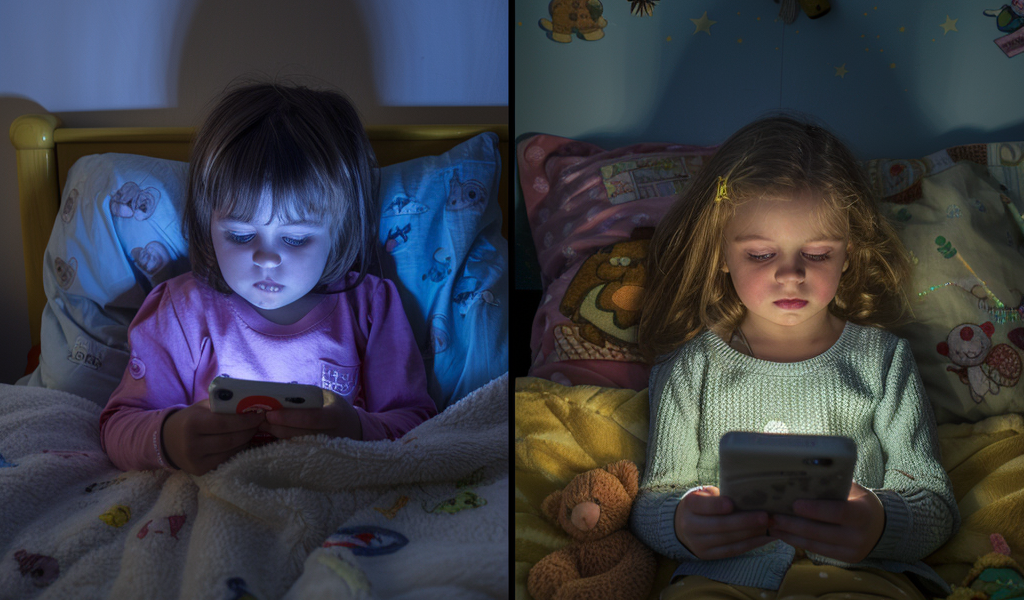In today’s fast-paced digital age, the impact of technology on children’s sleep patterns has become a pressing concern for parents and caregivers. With the ubiquity of devices such as smartphones, tablets, and computers, understanding how these technologies affect the sleep quality of young individuals is crucial for their overall health and development.
Sleep is not merely a time for rest; it plays a vital role in the physical growth and cognitive development of children. During sleep, the brain processes information learned throughout the day, consolidating memories and skills essential for learning and social interaction. However, as children are exposed to digital devices at increasingly younger ages, the potential consequences on their sleep are raising alarms among experts.
Parents have long been concerned about their children’s sleep, and for good reason. Adequate sleep is fundamental for a healthy childhood, contributing to physical health, mental well-being, and emotional stability. When children do not get enough sleep, they may experience irritability, difficulty concentrating, and emotional meltdowns. Over time, chronic sleep deprivation can lead to more severe health issues, including obesity, anxiety, and other mental health disorders.
The dual nature of technology presents a complex challenge. On one hand, digital devices can facilitate learning and connectivity, allowing children to engage with educational content and maintain relationships with peers and family. On the other hand, increased screen time has been correlated with a decrease in physical activity, poorer health outcomes, and a rise in sleep disturbances.
Researchers are examining the various ways technology may interfere with sleep. One significant factor is the blue light emitted by screens, which can disrupt the production of melatonin, the hormone responsible for regulating sleep. Exposure to screens before bedtime can make it harder for children to fall asleep and stay asleep, leading to a cascade of negative effects on their daily functioning.
Additionally, the content children consume on devices can also influence their sleep quality. Engaging with stimulating or violent media can lead to heightened anxiety and difficulty winding down, further complicating their ability to achieve restful sleep. The constant notifications and alerts from social media and messaging apps can also contribute to a state of hyper-arousal, making it challenging for children to disconnect and relax at night.
As technology continues to evolve, so too does its presence in our homes. From the introduction of artificial lighting to the rise of television and gaming, each advancement has shifted how children interact with their environment. While traditional activities like reading before bed can be beneficial, they can also be replaced by screen time, which may not offer the same calming effects.
Children’s sleep needs vary significantly as they grow, with infants requiring nearly 24 hours of sleep in a day, toddlers transitioning to regular naps, and older children needing less sleep as they approach their teenage years. Understanding these developmental stages is essential for parents striving to create an optimal sleep environment for their children.
To mitigate the negative impacts of technology on sleep, experts recommend establishing consistent bedtime routines that limit screen time in the hours leading up to sleep. Encouraging activities that promote relaxation, such as reading or quiet play, can help children wind down and prepare for a good night’s rest. Parents can also set clear boundaries around device usage, especially during nighttime hours.
Moreover, fostering an environment conducive to sleep is crucial. This includes creating a dark, quiet, and comfortable sleep space free from distractions. Parents can also model healthy sleep habits themselves, demonstrating the importance of prioritizing rest in their own lives.
As the conversation around technology and children’s health continues to evolve, it is essential for parents, educators, and healthcare providers to work collaboratively in addressing these challenges. By staying informed and proactive, families can navigate the digital landscape while ensuring that their children receive the restorative sleep they need for healthy development.
Ultimately, while technology can offer numerous benefits, it is essential to recognize and address its potential drawbacks, particularly regarding children’s sleep. By fostering healthy habits and creating supportive environments, we can help the next generation thrive both online and offline.





